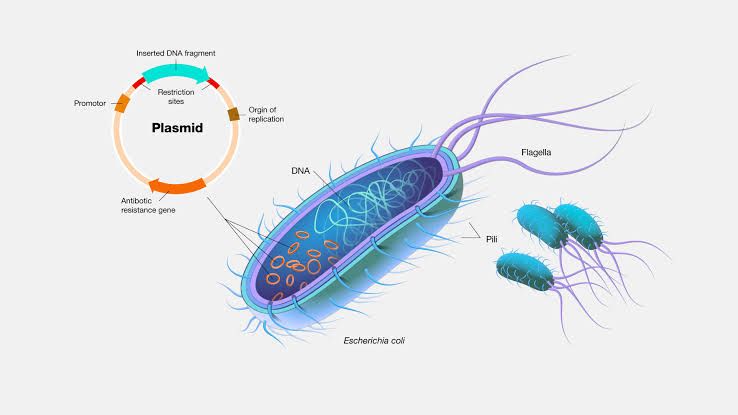
Isolation and detection of plasmid DNA from bacteria involves several key steps, including bacterial culture, cell lysis, purification of plasmid DNA, and subsequent detection methods. Here’s a detailed step-by-step explanation:
Step 1: Bacterial Culture
The first step in isolating plasmid DNA is to grow a bacterial culture that contains the plasmid of interest. This is typically done using a suitable growth medium that supports the growth of the specific bacterial strain harboring the plasmid.
- Selection of Bacterial Strain: Choose a bacterial strain that carries the desired plasmid. Commonly used strains include Escherichia coli (E. coli) due to its well-characterized genetics and ease of manipulation.
- Inoculation: Inoculate a single colony from an agar plate into liquid LB (Luria-Bertani) broth or another appropriate medium containing an antibiotic for selection (e.g., ampicillin if the plasmid has an ampicillin resistance gene).
- Incubation: Incubate the culture at 37°C with shaking until it reaches an appropriate optical density (OD), usually around 0.6-0.8, indicating that the bacteria are in the logarithmic growth phase.
Step 2: Cell Lysis
Once sufficient bacterial cells have been grown, they need to be lysed to release the plasmid DNA.
- Harvesting Cells: Centrifuge the culture at approximately 4000× g for 10 minutes to pellet the cells. Discard the supernatant.
- Resuspension: Resuspend the cell pellet in a resuspension buffer (commonly Tris-EDTA buffer) which stabilizes pH and protects against DNases.
- Lysis Solution Addition: Add a lysis solution containing sodium hydroxide (NaOH) and sodium dodecyl sulfate (SDS). NaOH denatures both chromosomal and plasmid DNA while SDS disrupts cell membranes.
- Neutralization: After mixing gently, add a neutralization solution (often potassium acetate) to precipitate proteins and genomic DNA while allowing plasmids to remain in solution.
Step 3: Purification of Plasmid DNA
After lysing the cells, it is essential to purify the plasmid DNA from cellular debris.
- Centrifugation: Centrifuge again to separate cellular debris from the supernatant containing plasmid DNA.
- Precipitation: Transfer the supernatant to a new tube and add isopropanol or ethanol to precipitate out nucleic acids.
- Washing: Wash the precipitated DNA with ethanol to remove impurities and then dry it briefly before resuspending in TE buffer or sterile water for further use.
- Silica Column Method (Optional): Alternatively, use silica-based columns where under high-salt conditions, plasmids bind to silica while contaminants are washed away; elution occurs with low-salt buffer or water.
Step 4: Detection of Plasmid DNA
Once purified, various methods can be employed to detect and analyze plasmid DNA:
- Agarose Gel Electrophoresis:
- Prepare an agarose gel with an appropriate concentration based on expected fragment sizes.
- Load samples mixed with loading dye into wells.
- Apply an electric current; negatively charged DNA will migrate towards the positive electrode.
- Stain with ethidium bromide or another nucleic acid stain for visualization under UV light.
- Spectrophotometry:
- Measure absorbance at 260 nm using a spectrophotometer; this indicates concentration.
- Assess purity by calculating ratios such as A260/A280; pure nucleic acid typically has a ratio around 1.8-2.0.
- Restriction Digestion Analysis:
- Digest isolated plasmids with restriction enzymes specific for known sites on your vector.
- Analyze resulting fragments via agarose gel electrophoresis for size comparison against expected patterns.
- PCR Amplification (if applicable):
- Use primers specific for sequences within your plasmid.
- Amplify regions of interest; successful amplification indicates presence of target sequences within your isolated plasmids.
- Sequencing (if necessary):
- For confirmation of identity or mutations within cloned genes, send purified plasmids for sequencing analysis.
By following these steps systematically, researchers can effectively isolate and detect plasmid DNA from bacterial cultures for various applications in molecular biology research, genetic engineering, and biotechnology processes such as cloning or recombinant protein production.







